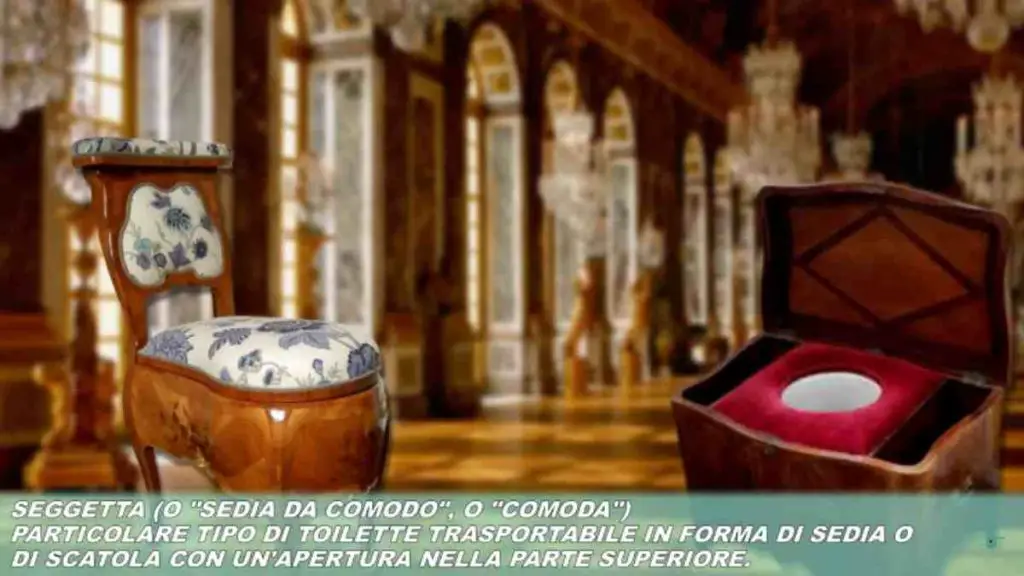The Palace of Versailles it is the most sumptuous and majestic symbol of the absolute power of the French monarchy: known for its opulence, this palace was an ancient residence of the Bourbons of France, about 15 km from Paris, which was redeveloped at the behest of Louis XIV. In fact, the King wanted to move away from the capital and at the same time surround himself with all the nobles, so as to be able to keep them under control within a single and immense residence.
Life inside the Palace of Versailles: not all that glitters was gold
From that moment Versailles became the residence of political power until 1682 and three Kings of France stayed there. The Palace could count a total of 350 apartments, several corridors and secret passages, and being able to reside in this place was considered a privilege for all courtiers who could access it. At Versailles what mattered was one’s rank and lo social statusand in fact everyone tried to show off as best they could so that they could be looked upon favorably by the King.
Although on the surface everyone seemed to be immersed in actual luxury, in truth the Court soon There were several flaws hidden, a reality that was decidedly less beautiful than they wanted to make it appear at the time. In fact, the hygienic-sanitary conditions within the palace walls they were held of very little importance.
In fact, the hygienic conditions were truly precarious given that, despite several attempts to improve the living conditions of all the courtiers, inside the palace there was a de facto lack of sewage systemsrunning water systems and adequate toilets to respond to the needs of all the people who lived there.
In fact, in the very luxurious rooms, toilets were often missing and consequently people were forced to use chamber pots which were emptied by the servants. There was an object that was called comfortable and it was a chair equipped with a central opening which was intended to be used as a portable toilet. Also these and other objects caused high risks of contamination.
Obviously with such a practice the smells spread very easily and you can tell that they were really unpleasant; if you consider that, even more so, running water was considered a luxury reserved for only a few people, the conditions they found themselves in were even more serious than expected. In fact, most of the inhabitants of the Court used it water taken from wells or from fountains, which however often turned out to be contaminated by various wastes.
Another problem that led to very unpleasant odors and very often the proliferation of parasites and bacteria was linked to the fact that there was not, as anticipated, an effective sewage system: in fact the wastewater and water were conveyed into open channels, while the solid waste was often accumulated in some landfills which were located near or even inside the palace.

The health of the inhabitants of Versailles: between diseases and parasites
Unfortunately a situation like the one present in the Palace of Versailles could only cause Health problems. In fact, all the courtiers, or at least most of them, had to face various problems ranging from epidemics of infectious diseasessuch as dysentery, cholera or typhus, up to the presence of lice, parasites and bedbugs which were found in all environments.
Furthermore, all these parasites found fertile ground not only in the dirt that accumulated in the palace, but also by how the courtiers dressedgiven that they tended to use several layers of clothing, full of accessories and ornaments, as well as several wigs and thick layers of make-up which they often did not remove, but covered with more make-up.
Unfortunately it wasn’t easy to do either improve hygiene conditions of the Palace, given that it was precisely the aristocrats who set limits to such changes, given that several nobles and courtiers perceived hygiene as a purely bourgeois concern, as if it were a sign of weakness.
On the other hand, the religious morality he advised against washing one’s intimate areas, since this would have involved touching those parts of one’s body considered most inappropriate. Just think that the Queen Marie Antoinette, accustomed to the hygiene of the Austrian Court, was forced to wear at least a gown when she wanted to take a hot bath. Furthermore, an object such as the bidet quickly fell into disuse shortly after it was introduced, as it was used by prostitutes and consequently nobles did not want to be associated with these women.
Other little curiosities about hygiene in Versailles
Despite the poor personal cleanliness of the courtiers, there were still attempts to try to maintain themselves in dignified conditions, or more importantly to hide some problems and unpleasant odors. For example, to try to relieve bad breathpeople used herbal mixtures that they rubbed on their teeth and gums, or they chewed celery or cider peel.
For clean the rooms instead bamboo brooms were used and odoriferous substances were burned to try to mask the odors. Furthermore, scented sponges and herbal pastes were often used to mask bad odors, as well as rice powder which served to hide wounds caused by poor hygiene.
#Hygiene #Palace #Versailles #consequences #choices
